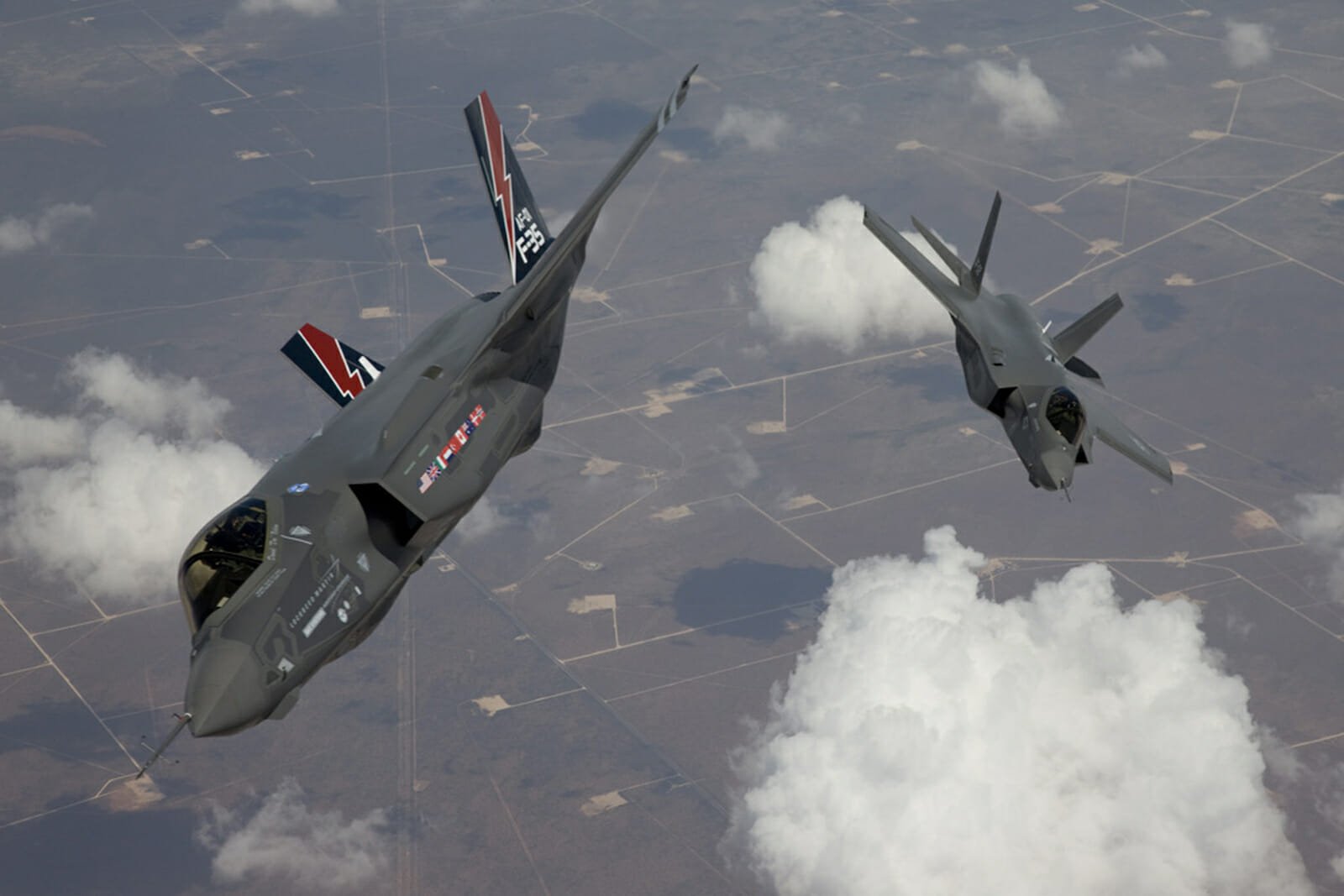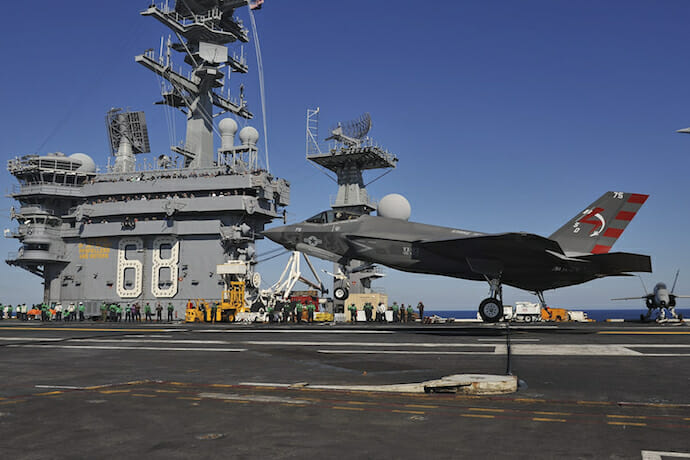
Tech
Joint Strike Fighter: The Real Costs of the F-35
The JSF program was a failure from the outset. The program’s purpose was to construct a single fighter system that would serve all military branches’ purposes; however, the military’s diverse needs have made the F-35 an engineering impossibility in every way possible.
Choose any aspect or innovation associated with the F-35 and it fails spectacularly. Its effective range is far shorter than previously stated, and its modest air-to-air tactical capabilities are outpaced by prior-generation fighters. The Helmet Mounted Display Systems have been exceptionally problematic and the cause for a number of delays, for they not only fail to improve situational awareness but also could kill pilots forced to eject. In short, the US armed forces are financing a program that has been out-classed, out-armed, and out-paced by existing technology.
Current technology has not been without substantial issues during and after their development. The F-16 was notorious for problems in its fly-by-wire systems. The venerable F-14 was a maintenance nightmare, requiring nearly 50 maintenance hours per flight hour. The F-4 was constructed without an internal cannon which plagued the aircraft during the Vietnam War. All warplanes have been hampered by failing to meet expectations, however, even with their problems and limitations, each aircraft has had a niche role or specialization that has kept the grounding of one model from creating service-wide disruptions.
It is difficult to imagine this will remain the case when the JSF begins to replace the existing military aircraft. Every aspect of this project – from its behemoth price tag to its goals and construction processes – will change the game by merit of its sheer scale and inventiveness, and with nearly 2,500 planes ordered by the US military alone the F-35 will become the new workhorse for the Air Force, Navy, and Marines.
With seemingly no end in sight to the program’s flaws and shortcomings, the belief that this leviathan of a public expenditure will become a mainstay in American defense should leave most armchair generals in a cold sweat.
Compounding these concerns is that it will eventually become the frontline weapon of choice for numerous other allied armed forces in Europe and the Pacific. The primary concern stems from the lack of air-power diversity that will appear around the world. The JSF is a monumental leap backwards for the resilient and capable US Air Force, and any future technological problems have the potential to create a deeply systemic loss of security for every American ally.
Diversity = Security
In the past, an issue with an airframe did not create a net loss of security due to the US’ impressive inventory of front-line fighters. Flaws in one aircraft could lead to its grounding but missions could still be carried out by other models. System and model diversity is directly correlated to the military’s resiliency which assisted in mitigating potential branch-wide crises. A mixed fleet provides a chance for varying systems to offset the other’s known weaknesses.
Deploying and utilizing diverse airframes is essential to ensuring air superiority and is key to the armed forces’ capabilities in the field. Diversification can prevent catastrophic net loss of security or create an insurmountable challenge during a sortie. As a case in point, a mix of F-15s and F-16s were utilized by Israel in their strike against the Osirak nuclear site in Iraq; the model’s offsetting strengths created the best chance for success. Moreover, the F-22 is without peer in its ability to dominate the air and destroy enemy fighters. JSF is poised to replace these and many other fighters in the near future, even though the F-35 is inferior to these older models.
There is a rationale as to why air forces the world over have multiple models in ample supply: to keep fleets airborne, strong, and capable against any potential threats.
Critics have pointed out that having too many separate models and systems can create problems for the armed forces, regarding logistics and maintenance. Standardizing systems is meant to alleviate these problems though they persist. One problematic area in modern warfare is the wide assortment of software that must function effectively as well as communicate with other systems while relaying exact information back to the operator. Identifying problems and maintaining these complex systems is why maintenance staff vastly outnumber pilots and crew in modern air forces.

Having one aircraft running on a singular system may have the potential to minimize technological issues and decrease perceived logistical and maintenance problems, but it also means there is only one system vulnerable to corruption – one system for the enemy to hack – that could ground the entire fleet. A Canadian citizen has already pled guilty to selling information on the F-35 to the Chinese government and the program’s secrets have already been incorporated into China’s new stealth fighter. Corrupting the entire F-35 program seems like only a matter of time.
Furthermore, this aircraft’s development seems devoid and completely disconnected from the threats faced by the United States and its allies. Brushfire conflict, asymmetrical wars and low-intensity, long-running conflicts defined by faith or ethnicity have dominated the slate for years now. Loiter time, range and payload capacity are the key criteria for weapons designed to fight in this world, and current airframes set the tone for what future projects should look like. In terms of air superiority or multi-mission capability, the air wings of the respective services are already dominated by far superior, proven systems that do not cost the American taxpayer ungodly sums of treasure.
Simply put, the F-35 is the outcome of an entire system that is ignorant of reality.
Tone Deaf and Hubristic
Planning to replace an entire fleet with a singular fighter, whose secrets have seemingly fallen into enemy hands, illustrates the need for diversity in air power, while, simultaneously encapsulating the Pentagon’s short-sightedness in developing a much needed comprehensive security strategy. Rather than possessing a fully-fleshed, three-dimensional air force capable of meeting numerous challenges with over-lapping strengths, a post-F-35 world will witness a potentially tied-down US military required to conduct all missions utilizing an air fleet with universal weaknesses.
Currently, the United States can offset shortcomings by deploying mixed formations. When the country’s Air Force, Navy, and Marine fleets transition to the F-35, the American armed forces will all be flying the same airframe with the same exploitable flaws. This is hubris, pure and simple.
The American public has already spent over $1.5 trillion on the JSF program. The Pentagon and Lockheed Martin have already predicted that it will be the fighter of the future. We all wait for the aircraft’s full deployment with cautious optimism but remain skeptical and expect the worse. The F-35 program is not without its defenders; individuals blinded by the concept that new must mean better and that detractors apparently misunderstand the purpose of multi-role aircraft. They tend to view the JSF based upon its potential, though reality has shown the world a starkly different reality.
The project’s intricacies are not lost on its critics. Americans have always had a love affair with bleeding-edge technology and the Joint Strike Fighter program is yet another example of how these demands expose the United States. The idea of concurrency – mass-producing and testing flaws in systems, simultaneously – should have remained a theoretical concept and yet, it has been implemented in one of the most complex engineering programs in military history. Concurrency set the tone for the entire JSF program from the outset; an industrial-grade example of reach far exceeding grasp.
This program has also brought to light that the US Defense Department’s coffers are not necessarily bottomless. Mounting disquiet from those within the Pentagon has shown growing interest in upgrading existing equipment rather than developing new technology from scratch; seemingly a lesson learned from not only sequestration, but also the reallocation of funding to ensure the F-35 program’s viability. In order to salvage their respectability on the international stage, the Defense Department and Lockheed Martin need to stop tweaking the project’s edges – dragging out timeframes and increasing the fighters overall costs – and begin producing these fighters for testing and deployment.
Allied Problematique
American allies have openly stated their intentions on making the F-35 a mainstay to their military and security apparatuses, which takes all the previously stated technological issues and raises them to an international level. NATO nations currently produce an impressive air fleet from Saab, SEPECAT, Panavia, BAE, Dassault, and the Eurofighter consortium; however, many NATO members have agreed on the F-35 as their replacement of choice for aging inventories.
This will only create near uniformity in American ally’s inventories with the same exploitable flaws. The problem with this plan is the homogenous aircraft inventory will threaten to not only hamstring American air power, but also the capabilities of the entire post-war alliance system. Universal problems with a singular aircraft threaten to undermine not only a single country’s capabilities but those of an entire geopolitical bloc. Moreover, with the United States stripping money away from other defense programs to ensure the solvency of the F-35, security gaps should be expected around the world.
There is another threat to America’s cohesion with its allies that is undermined by the F-35 program; it is a much more immediate risk that is harder to quantify yet easier to see. The Pentagon’s insistence that the F-35 is the next-generation fighter of choice coupled with Lockheed Martin’s inability to keep the project on time and budget has hurt the US’ prestige and reliability. Similar to the Skybolt so many years prior, the fighter is becoming a diplomatic black eye for the United States. Australia and Canada have witnessed parliamentary outcries over the F-35; Israel has mitigated the fighter’s role due to its heavily flawed and unproven system.
Harder to analyze and easier to dismiss, this aspect is the most worrisome. America’s image is still recovering from Afghanistan, Iraq, and Libya, while attempting to posture in order to reassure allies in the Pacific and Europe. A plagued fighter pushed relentlessly by the US military and defense contractors is not merely a terrible defense policy; rather, it is an exercise in bad statecraft in an increasingly chaotic world that so desperately needs vision and responsibility.


